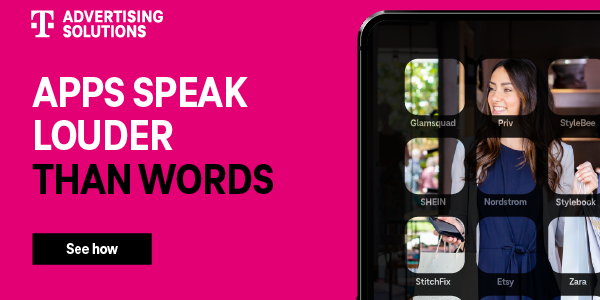5G can provide significantly greater speeds and accommodate more devices than dated 4G networks. For consumers, it’s revolutionizing communications and content.
But from a marketer perspective, the impact will be no less transformative. So, what do today’s brands need to know about this revolution?
Delivering foundational improvements to ad experiences
At the most basic level, 5G ubiquity is going to bring a foundational improvement to mobile ads and, in turn, mobile advertising ROI. 5G technology enables marketers to transfer larger volumes of data at faster rates, which creates enhanced opportunities for personalization, real-time engagement and more robust in-app experiences.
In addition, 5G’s supercharged speeds will continue to reduce latency associated with mobile ads. With reduced latency, advertisers will be able to unlock access to broader audiences and improve user experiences, leading to a decrease in ad aversion. This can expand the reach of their campaigns and drive better results.
Enhancing sponsorship opportunities and measurability
5G will also continue to open enhanced sponsorship opportunities for advertisers, particularly around major events. Consider, for example, the 5G implementations happening at sports stadiums around the country.
By implementing faster speeds, mobile users inside stadiums can now access new content, such as instant replays and live gameplay. This creates valuable sponsorship potential for brands who want to engage consumers in exciting and easily measurable ways.
Bringing emerging ad formats to life
Beyond live events, 5G promises to unleash the next generation of technology that advertisers have spent a lot of time discussing – but far less time investigating.
Virtual reality (VR), augmented reality (AR), and Internet of Things (IoT) have captured the imagination of brands and agencies, but real-life use cases have been limited.
With ubiquitous 5G, this will cease to be the case. We’ll at last see consumer adoption catch up to the hype. And that’s when brands will be truly welcomed into these emerging spaces, as sponsors and virtual product providers, as well as developers of their own immersive digital environments and applications.
Opening new media horizons via autonomous vehicles
And finally, we come to the future of transportation, which 5G technology is already revolutionizing. While autonomous vehicles and driverless cars have already come a long way in a 4G world, the 5G-enabled shift toward driverless cars is inevitable.
For advertisers, the move toward driverless vehicles represents a whole new world of screen time and media availability, due to the massive amount of time people spend commuting and traveling in their cars. Today’s consumers are constantly surrounded by screens, choosing to consume as much media as they can manage within their day-to-day lives, apart from the time they spend commuting in their vehicles.
Driverless cars will unlock new media opportunities on an impressive scale. We’ve already seen this with the rise of rideshare advertising. And we know that riders today are open, if not eager, to engage in screen-based rideshare experiences while they travel. Imagine how media consumption and ad opportunities will transform when drivers become riders within their own vehicles.
Going forward, cars will become not only a place to consume media, but also where online shopping occurs, whether via mobile devices or in-car tablets. Get ready for the era of car commerce.
5G is becoming ever present. Its influence is only set to increase in the years ahead. With continuous improvements in speed and availability, advertisers, brands and agencies should start strategizing now to capitalize on the possibilities of tomorrow.
For more articles featuring Mike Peralta, click here.













